Fall 2021 Newsletter
Here’s how to help ‘courageous’ women fleeing home for Tri-City shelter

Lorna Thomson, program manager, reflects on the resilience of women who flee domestic violence and seek shelter at Joy’s Place. Diane Strandberg
The road from domestic violence to domestic peace in the Tri-Cities travels through Port Coquitlam.
It’s at Joy’s Place, where women, often with children, make that journey from fear to strength.
In a house with 12 beds, including space for kids, these women are learning to take steps towards independence and leave behind the trauma of emotional abuse and physical harm.
“People who leave abusive situations experience loss of job, no income and upset their child’s schooling, that takes a lot of courage,” says Lorna Thomson, Joy’s Place program manager.
Details on how you can help at bottom of the story.
They arrive on the doorstep of the secure building — the address is not publicized — with little more than the clothes on their back and important documents secured away in their handbags.
From quiet networks of friends, a whisper outside a schoolyard, an alarmed police officer, they hear about Joy’s Place and call Tri-City Transitions Society.
But once they get to the home, it’s not always a relief they feel, says Thomson, who sympathizes with the women, she says, are “second-guessing,” their decision.
Housing, finances, children’s school all have to be found, says Thomson.
The COVID-19 pandemic has only intensified the women’s fears.
Instead of leaving their abusive situation, they stay, worried about exposure to the virus.
When they do finally arrive, says Thomson, “they are coming in with intensified abuse, more physical abuse, more emotional abuse.”
To support the women leaving during COVID-19, Joy’s Place adjusted their operations. But it hasn’t been easy.
Capacity has been reduced, extra PPE and cleaning materials purchased, in-person calls were replaced by telephone intake and kitchen and laundry at the home had to be scheduled.
But the biggest change in recent months has been the slow erosion of volunteers.
Even a crucial life skills program, called Resiliency, had to be cancelled.
Thomson hopes that will soon change, thanks to a new fundraising drive by a major drug store chain.
From now until Nov. 5, the Love You campaign by Shoppers Drug Mart will support Joy’s Place with 100 per cent of donations collected at cashiers.
Thomson said the money will go to the Resiliency program to help build up women’s self-esteem with life enhancement programs such as martial arts, yoga, music, arts, self-defence and cooking.
“They don’t believe in themselves,’ says Thomson, “they need something to help them focus on what they can do. Resiliency provides women with evidence — ‘yes, I can learn I can adapt, I can grow.’”
As the pandemic stretches out over months and even years, Joy’s Place hopes that it can provide that bulwark of safety to those vulnerable women who need it most.
Other ways you can help, visit www.tricitytransitions.com
Needs include:
- Money for programming
- New clothing…
- Pajamas
- Robes
- Sweaters
- Jackets
- Gloves
- Hygiene products
- Make-up/self-care items
- Cleaning products for the facility
PEACE GROUPS – Spring 2020
Guardians of children who are 3-11 years old (6 weeks)
Topics include: attachment, struggle with behaviour, co-parenting, emotions, triggers, anxiety (fear), problem-solving techniques, etc. Client will receive information prior to session with regard to topics including practice work for the following week.
Guardians of youth aged 12-18 (6 weeks)
Topics include: attachment, struggling with behaviour, co-parenting, emotions, triggers, anxiety/fears, problem-solving techniques, through psychoeducational process. Client will receive information prior to session with regard to topic including practice work for the following week.
Children who are 6-9 years old (6 weeks)
Sharing and identifying feelings with others in group in the comfort of their home. Groups help establish connection with other children as well as build on their resiliency in establishing a closer relationship with their guardian.
Youth Group (6 weeks)
Topics during youth groups vary. More common topics are relationships, identity, emotions, triggers (reactions), anxiety (fears), problem solving techniques and safety. Youth groups is a great way to meet others. You are not alone.
Healthy Relationship vs. Unhealthy Relationship

Relationships are a necessary part of life. They improve our lives and boost our enjoyment of life. However, relationships can cause discomfort, and sometimes even cause harm.
What makes a relationship healthy is respectful communication that creates trust, openness and intimacy. In fact, effective communication allows individuals to resolve conflicts, solve issues and increase their contribution to build up on the strength of their relationship. In addition, in healthy relationship individuals should be able to maintain their freedom and identity.
This means individuals maintain their own values while respecting their partner’s values mutually. A healthy relationship provides individuals growth and satisfaction. In addition, establishing healthy boundaries is an important part of healthy relationships.
According to “Grade 12 Active Healthy Lifestyles, 2009”, some important characteristics of a healthy relationship include closeness which means intimacy, trust and supportiveness during stressful times and sharing your feelings easily. You are able to share your values, common interests, experiences, and respect differences in each other.
You know about communication skills and you are open to listen to each other without blaming or judging. You use respectful language and understand your partner’s needs and you are ready to compromise. You can laugh together and enjoy of being together. Finally, you care about each other and show your affection unconditionally.
While in an unhealthy relationships, individuals neglect themselves or their partners’ needs or feelings. They do not feel free to express disagreement and feel pressure to change themselves to change whom they are to make their partner happy. In unhealthy relationships, individuals feel obligated to have sex or may refuse to use safer sex methods. There is no privacy and they feel forced to share everything with the other person. There can be verbal, emotional or physical violence during an argument. There is no equality in the relationship and one or both partners attempt to control or manipulate each other. There is lack of boundaries and respectful communication. (UW-Seattle Hall Health Center).
If you are experiencing some of these negative characteristics in your relationship, it is time to work on it. Talking to a counselor or mental health provider can help you to learn how to improve your strengths and values. Recognizing your values provides an opportunity to set healthy boundaries that will help you to learn how to be more assertive in your relationships.
Empowerment and positive self-esteem comes out of self-awareness that includes being aware of both your strengths and weaknesses.
Healthy Families

It can be helpful to turn to healthy habits and relationships especially with the many overwhelming changes around us. There have been many adjustments people have had to overcome in a short amount of time that have increased pressure on families. Some of those pressures include one’s own health, financial situations as well as the additional multiple hats parents are wearing to ensure their children are safe, healthy and keeping up with their extracurricular activities and school assignments. The seclusion for those who live alone and who have felt removed from their normal are also having to reflect on all the changes around them including financial security and coping with the unknown, away from others. There are many strategies that may help support individuals who feel a sense of overwhelm, powerlessness and fear.
Strategies for managing stress and anxiety during this time can be helpful in maintaining your health and well-being. Some strategies include breathing, visualization, expressing yourself through art or dance, journaling and communication. It can be helpful to turn to healthy habits, and relationships especially with the many overwhelming changes around us. Now is a great time to reflect on some of the things we use to enjoy and create new experiences while continuing to acknowledge the many valid concerns we have.
We are all in this together. Empowerment comes from within and from what we can control. “..remind yourself that the only thing you can truly control is you – and your reaction to what the world throws at you” (Patrick M Regan).
Children Who Witness Abuse: A Resource for Educators
It’s back to school time in Canada, and teachers are gearing up for the year ahead.
But many educators feel ill-equipped to support students who are experiencing violence at home. From our children’s and parenting support counsellors, we offer this resource on helping children who have witnessed abuse.
The students that have been exposed to verbal, psychological, emotional or physical abuse face a battlefield at home. The caregivers that were supposed to keep them safe and secure at home have been unable to do so, and therefore, the children have lost their ability to trust. When the children arrive at school, they often present as challenging for the teacher and the rest of the class. They generally are lagging in many areas such as the ability to self-regulate, maintain concentration, and interact with peers as well as struggle with executive function tasks such as transitioning.
What you may see in the classroom
Instinct to Fight
-Adrenalin-Based Alarm Problems
-Externalized Reactions
-Behaviours:
-
- Aggression to self or others
- Defensiveness
- Defiant-like attitude
- Attracted to setting off alarms in others
- Seeks out risk taking activities
- May seem to lack emotions
Instinct to Flee
-Agitation-Based Alarm Problems
-Avoidance Reactions
-Behaviours:
-
- Short or scattered attention
- “Gapping” out
- Running out of the classroom
- Avoiding seat work
- Agitation such as fidgeting
- Seeming unable to stay out of harm’s way
- Impulsiveness
Instinct to Freeze
-Anxiety-Based Alarm Problems
-Internalized Reactions
-Behaviours:
- Intense worries and fears
- Somatic complaints
- Obsessions
- Compulsive behaviours
- Including oral activities (biting, chewing, nail biting)
- Rhythmic actions
- Seeking distractions
Message they are trying to convey: “Help me, I am overwhelmed, I don’t know how to handle this.”
What you can do
The aim is to assist these children to shut off their alarm systems so their brains can rest and learn. Here are some strategies you may already be using, or might consider implementing as best practices:
Safety
The biggest need these children have is to feel safe, and to know that the adults in their life can keep them safe from harm and be a secure base from which to explore the world. In the school classroom, it is giving a clear message that you are there for this child, and that you can handle them, even when they are overwhelmed. You see past their behaviour to the underlying message that they need help and are overwhelmed, and care enough to set boundaries and follow through with them when they are broken.
It is letting them know that YOU, as the teacher or other member of the school team, are the answer for them, rather than just having the answer for them.
Bridging
If at all possible, have the previous year’s teacher personally introduce the child to the new teacher at the start of this school year. This lets the child know that this will be a safe person for them based on their ability to trust the previous teacher.
Belonging
Provide an increased sense of belonging for the child. Acknowledging their presence every day and your enjoyment or appreciation of something you have observed in them. When they need to be removed from the classroom or other similar separation, let them know that they have not broken your relationship with them: state that you will see them when then return and you can try again to continue the work.
“Children learn best when they think their teacher likes them.” – Gordon Neufeld
Safe place to move from mad to sad
Give them space and a place to release some of their emotional backlog safely. These children are lagging in their emotional regulation ability and do not have the skills to calm down on their own yet. These feelings are overwhelming and scary for them. Letting them know that you see their escalating emotions, and then help them learn what is happening for them by validating and naming the emotion. It also may be necessary to keep them apart from other children unless they are supervised. By keeping them inside at recess so they can play by themselves, having them visit a calming “safe eruption” room, or letting them leave the classroom to get a drink of water so they can practice mindfulness, they can begin to catch up on improving social connections.
Celebrate!
Keep in mind that kids do well if they can and celebrate the small steps to success. You’ve got this!
Feel free to contact us for phone consultation, workshops, groups, or to refer parents and their children directly to us at www.tricitytransitions.com
5 Refreshing Reads on Identity and Relationships
Building off our post about the growing medium of podcasting, we’re back at it this week with some book recommendations. With e-books and audiobooks exploding onto the scene, it’s easier than ever to soak up knowledge and entertainment in book form.
There are millions of books featuring relationship and life advice, so we’ve attempted to curate a short list of books that might teach you something or help you feel less alone. Whether you’re dipping your toes into the world of books or are a voracious reader, we hope you enjoy at least one of the following reads.
A Sucky Love Story: Overcoming Unhappily Ever After by Brittani Louise Taylor
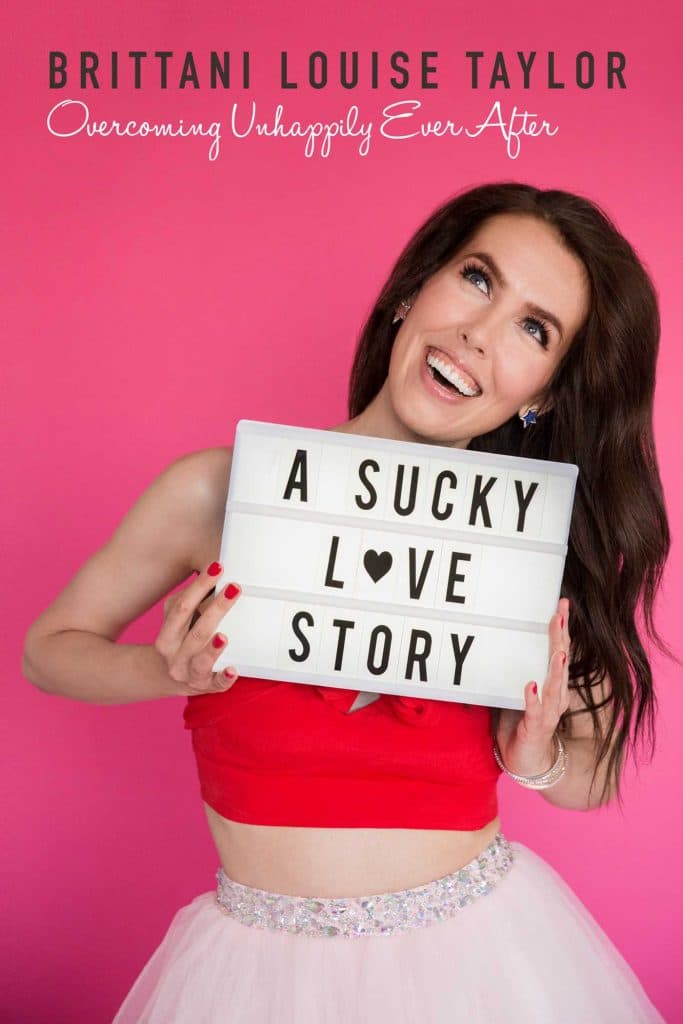
“For him, it was ‘love at first sight’. For her, it was ‘anxiety on every date’.” In her debut book, actress, mother, and YouTuber Brittani Louise Taylor reveals the harrowing details of a two-year relationship that left her with a child and a complex legal battle. A Sucky Love Story is due to come out in December 2018, and will surely be an inspiring tale of trauma and recovery. “This isn’t a love story. It’s [her] story of survival.” (Source: Amazon)
All Out: The No-Longer-Secret Stories of Queer Teens throughout the Ages edited by Saundra Mitchell
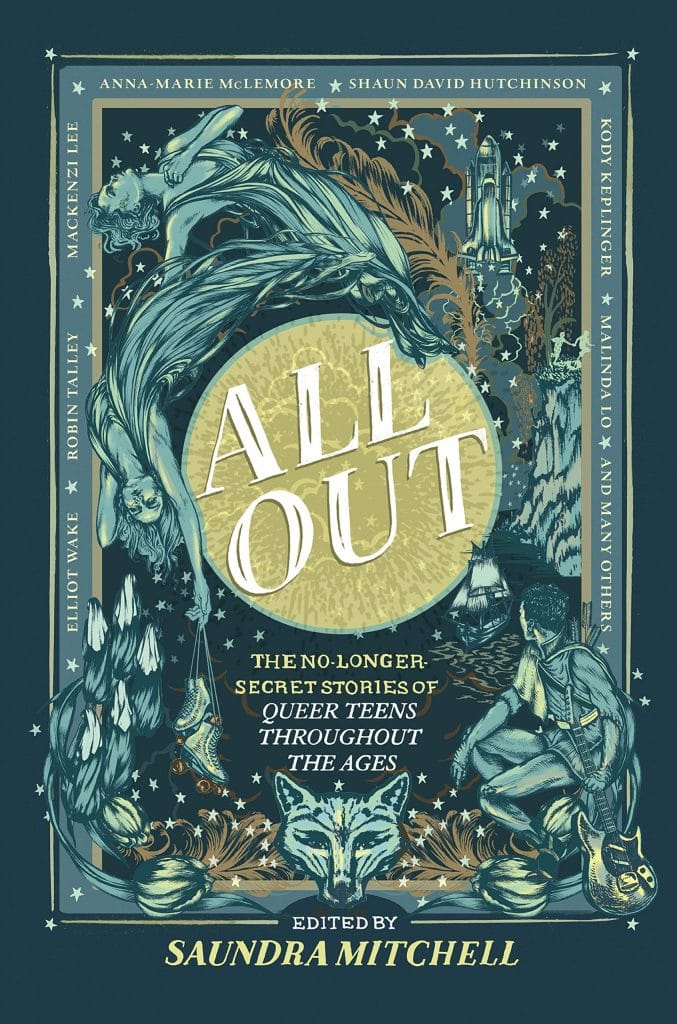
Are you a fan of historical fiction or looking to support diverse authors and stories? Even if you aren’t, you might want to give All Out a read. Written by seventeen young adult authors from across the queer spectrum, this beautifully written collection will surely open your mind and heart. “From a retelling of Little Red Riding Hood set in war-torn 1870s Mexico featuring a transgender soldier, to two girls falling in love while mourning the death of Kurt Cobain, forbidden love in a sixteenth-century Spanish convent or an asexual girl discovering her identity amid the 1970s roller-disco scene, All Out tells a diverse range of stories across cultures, time periods and identities, shedding light on an area of history often ignored or forgotten.” While this isn’t strictly a relationship read, identity often intersects with sexuality. (Source: Abe Books)
Deal Breakers: When to Work On a Relationship and When to Walk Away by Dr. Bethany Marshall
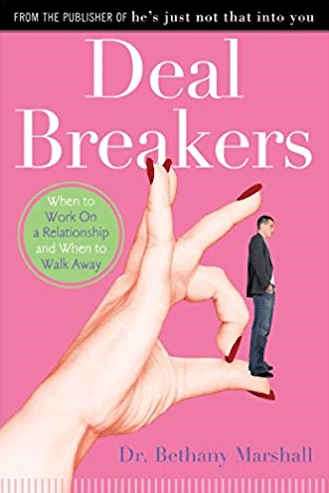
If you’ve ever wondered whether a relationship is worth fighting for, this book is for you. Dr. Bethany Marshall discusses setting boundaries, identifying negative patterns, and choosing the right person from the get-go. “Deal Breakers is about getting out of. . . ‘relationship purgatory’ – where the present is unfulfilling and the future is the only thing you can hope for.” Relationships are hard work, and this book breaks down how hard they should really be. (Source: The Huffington Post and Simon and Schuster Canada)
The Science of Happily Ever After: What Really Matters in the Quest for Enduring Love by Dr. Ty Tashiro
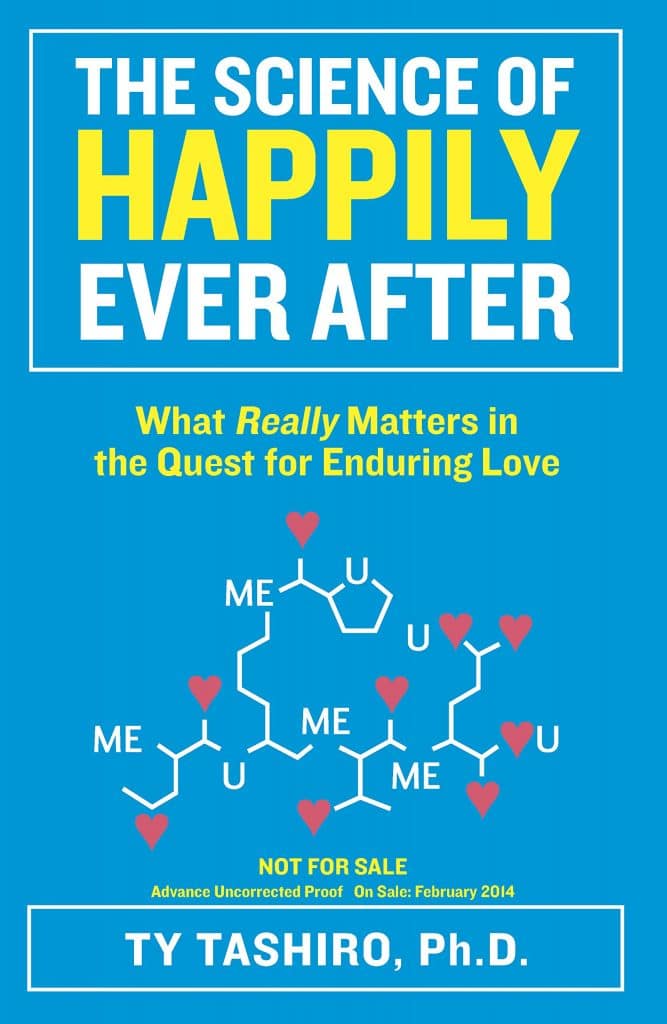
Whether you’re a science lover or not, you’ll find this “accessible, yet research-based book” full of insight on why we choose our partners. Acclaimed relationship psychologist Dr. Ty Tashiro offers evidence-based advice with a dash of humour, providing a “framework to help singles find their happily-ever-afters” (if they’re looking for love at all!) Tashiro draws from a wealth of knowledge to help his readers identify pitfalls and make smarter choices. (Source: Amazon and LifeHack)
The 5 Love Languages: The Secret to Love that Lasts by Dr. Gary Chapman

On the off chance you haven’t heard of this relationship classic, we decided to include it in this list. The idea is that every person has a “love language” that they prefer to communicate affection with. The 5 languages are Words of Affirmation, Quality Time, Acts of Service, Receiving Gifts, and Physical Touch. Learning more about your own love language, as well as those of friends, partners, and colleagues, can help you navigate relationships better. Whether you subscribe to this framework or not, it’s an interesting way to learn more about yourself and those you love. (Source: The Huffington Post)
If you aren’t a fan of the traditional paperback or hardcover, you may be able to find these in e-book or audiobook form (check your local library or an online retailer).
Let us know if there’s any books we missed and we just might post a follow-up article!
4 Attachment Styles: Breaking It Down
Have you ever thought about why you seem to be the clingy one in the relationship? Why you tend shy away from asking for support? Why you avoid intimacy/closeness? Or simply why you’re self-confident and are able to seek support from your partner? Well, the four attachment theories help explain these defining features in relationships.
Attachment theory was first discovered in the 1960’s by John Bowlby and Mary Ainsworth. Bowlby and Ainsworth first studied attachment theory on infants and young children with their caregiver. Attachment styles in infancy and teen years are different then in adult relationships. Adult attachment styles are based on the expectations of the partners’ responsiveness (Bradbury & Karney, 2013).
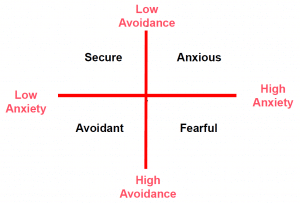
Above is a picture that describes the overarching idea of what the four attachment styles are. Here is a breakdown of it:
- Avoidant in this context, is indicated as low or high avoidance, which helps to identify whether the individual is comfortable on being dependent on others and having others to depend on.
- Anxiety in this context, is indicated as either low or high anxiety, which helps to identify whether the individual is comfortable being alone or not.
Secure Attachment
An individual who has a “secure attachment” is someone who has low anxiety and low avoidance. Securely attached individuals tend to be more satisfied with their relationship as they’re self-confident to be independent in their relationship and to be intimate with their partner. When they’re in a state of distress, they’re comfortable with seeking out support from their partner and others, which in turn allows their partner to move freely by themselves.
Secure adults are coherent and realistic in discussing any concerns and misunderstandings with their partner, and are able to offer support to their partner when they’re distressed. The outcomes of being a securely attached individual are having relatively good personal and social adjustment. An example of good social adjustment would be being able to adjust to various social events. Another outcome would be having a stable and good quality relationship with others around you, which includes family members, friends, coworkers, and acquaintances.
Having a secure attachment is the best attachment style to have not only in adult relationships, but also the relationship between a child and their caregiver.
Anxious Attachment
Unlike securely attached individuals/couples, anxiously attached individuals are people who have high anxiety and low avoidance. Anxiously attached individuals are quite the opposite to securely attached individuals as they’re clingy to their partner, which means that they’re quite demanding when it comes to closeness, attention, and approval from their partner (Bradbury & Karney, 2013). Because of these actions, they may have low self-worth. Also, when the individual is distressed, they’re heavily reliant on others for support. As a result, these individuals develop their confidence and self-worth through their partners’ responsiveness and attention they provide.
Unlike the outcome of being securely attached, anxiously attached individuals are quite the opposite when it comes to personal and social adjustment. They relatively have poor personal and social adjustment. Therefore, when they’re faced with loss/rejection, they usually are quite quick to find out the source of loss/rejection. Another outcome is that they usually face interpersonal problems, such as intrusiveness, being demanding, dominating, and are overly disclosing with their partner and others.
Avoidant Attachment
People with avoidant attachment styles have low anxiety, but high avoidances. These individuals have very high self-worth, which often means they often express for independence. However, when they’re in need of help when distressed, they tend to avoid seeking out support from their partner and others.
People with avoidant attachment styles don’t really value the importance of close relationships, instead they value self-reliance. One of the outcomes of this attachment style is that individuals are generally good with personal and social adjustment. However, when they’re faced with problem, they tend to distance themselves from any form of intimacy with their partner.
Fearful Attachment
People with fearful attachment styles have high anxiety and high avoidance. Bradbury and Karney (2013) identifies that for individuals with this attachment style, they have high anxiety, which means they’re hypersensitive to potential hurt and rejection. Along with this, they’re highly avoidant, which means that they withdraw use withdrawal as a coping mechanism. Overall, individuals with this attachment style go through highs and lows because they fear being abandoned and alone, but also fear the close and intimate relationship with their partner.
Individuals with fearful attachment are unsure of themselves, non-defensive, and are self-protective. One of the outcomes of this attachment style is that individuals are generally have poor personal and social adjustment. Like avoidant attached individuals, they face interpersonal problems, such as shyness, they’re unassertive, and have difficulty expressing their feelings to their partner. These characteristics normally explain why individuals who have this attachment style avoid closeness from their partner.
Keep in mind that people’s attachment styles can vary between the four and may have characteristics from a few of these attachment styles. That being said, depending on the individual, one’s attachment style can change overtime.
We hope that this article gave some insight and a general understanding on what the four different attachment styles are, and how it affects relationships. Leave us a comment below what you think of this article!
Sources
Bradbury, T. N., & Karney, B. R. (2013). Intimate Relationships. New York, NY: W.W Norton
5 Misconceptions of Abuse: Breaking Down the Myths
What do you picture when you think of an abusive relationship? Perhaps you think of bruises or screaming matches, but what about drained bank accounts or frosty silence?
Because domestic violence isn’t frequently discussed, there are many misconceptions that circulate around it. We’re hoping to spread awareness and bust some of the following myths with this article.
Misconception # 1: Leaving the relationship should be easy
- There are many factors that may make it difficult for someone to leave an abusive relationship. These could include such things as: shared pets, children, cultural demands, financial dependency on the abuser, and the threat of worse violence should you choose to leave.
- In addition to these ties, there is also the emotionally manipulative aspect of such relationships. Abuse usually occurs after strong feelings for a partner have developed.
- “Think of someone you really care about and whose opinion you respect- if they started lashing out at you. . ., could you leave right away and never speak to them again? For most of us, the answer is no.” (Source)
Misconception #2: Abuse is always physical
- Many assume physical violence must be involved in an abusive relationship, but that is not always the case. Other forms of abuse such as emotional, financial, or digital abuse are common but often overlooked.
- Look forward to our future blog post offering an in-depth explanation of the various types of abuse.
Misconception #3: If someone needs help, they will ask for it
- Once someone realizes their relationship might be abusive, they will need support in planning for their safety. However, many people may feel ashamed, guilty, scared or isolated, and therefore hesitant to reach out for help. Make sure your friend knows that you will provide a listening ear and resources if they need them.
- Only 1 in 3 teens tell anybody about their abusive relationship (Source)
Misconception #4: Abusers are always putting their victim down
- Many abusers are charming and charismatic in most settings. The abuse doesn’t usually start until their partner has developed strong feelings. You may be “swept off their feet” and find it hard to recognize the signs of abuse as they slowly build up.
- Violent episodes may be followed by tearful apologies and loving, kind gestures. Such tactics are designed to make you question their your misgivings.
- To learn more about this phenomenon, read our blog post on rationalization.
Misconception #5: You would know if your friend was abusive to their partner
- Many abusers are friendly and warm on most occasions. If they were constantly cold and cruel, their partner would have less reason to stay!
- Sometimes, you’re the only one who sees the manipulative side, and being believed can be devastating.
- If someone discloses abuse to you, taking them seriously is critical. Doing otherwise can lead them to question their judgement and remain in the dangerous situation.
These are only a fraction of the common misconceptions surrounding domestic violence and abuse. We hope you learned something new! If you did, comment below to let us know what you found most surprising.
Sources:
- Five Misconceptions about Dating Abuse (loveisrespect.org)
- Playing Their Part: How an Abusive Partner’s “Good Behaviour” is Part of the Act (thehotline.org)
- Six Common Misconceptions About Teen Dating Violence (stepsvt.org)
- Is This Abuse? Abuse Defined (thehotline.org)
Relationship Podcasts: 4 Podcasts You Should Listen To
Podcasts are entertaining, but could they also increase people’s access to meaningful advice? That’s a question many hosts are exploring as they delve into subjects from sexuality to mental health.
The podcast medium is increasingly popular, perhaps due to streaming services such as Apple Podcasts. There are shows covering endless topics, you can listen to them on the go, and they might even help you better your life.
We’re big fans of podcasts, and so in this article we’re recommending some shows that discuss love, life’s challenges, and finding your identity.
Ladies Who Lunch
“Ladies Who Lunch lets you sit at the table and explore topics often left out of polite conversation with YouTubers Ingrid Nilsen and Cat Valdes. Join their dialogue about sex, relationships, social phobias and more as they approach life’s dilemmas with compassion and a sense of humor.” Although the podcast ended in June 2018, there are plenty of archived episodes to explore.
Listen using: Apple Podcasts, Google Play Music, SoundCloud
A sampling of episodes:
I Do Podcast
Hosted by Chase and Sarah Kosterlitz, the “I Do Podcast” is on a “journey to create lasting love!” Full of interviews with relationship experts, therapists, and couples, this podcast is a comprehensive guide to improving your relationship. The episodes aren’t just for couples- topics have included self-improvement, resolving conflict, financial issues, and much more!
Listen using: Website, Apple Podcasts, and Google Play (search for Relationships, Sex, Dating and Marriage Advice – I Do Podcast)
A sampling of episodes:
- Mindfulness and Emotional Intelligence
- When Two Worlds Collide – Dating and Parenting
- Understanding Your Relationship Boundaries
- What Should I Do After a Breakup?
Want to read more on Emotional Intelligence? Check out our blog post for more information on what it is and how to develop it.
Optimal Relationship Daily
A curated experience, Optimal Relationship Daily is “a podcast created for those looking to improve their life one step at a time.” Learn from the best of the Internet with less work as carefully selected, high-quality blog posts are read to you by Joc Marie.
Listen here: Website, Apple Podcasts, Google Play Music, Spotify
A sampling of episodes:
- Why Aloneness is a Path to Recovery
- 5 Ways for Parents to Manage Anxiety
- Be Mindful: Your Children are Watching, Listening, and Learning and Healthy Parenting is not Only about How you treat your Children
- A Two-Step Process for Dealing with Difficult People and How to Deal with Toxic People
The Love Bomb with Nico Tortorella
“Younger star Nico Tortorella’s podcast digs into gender identity, relationships, and sexuality, with conversations tending toward intimate, vulnerable reflections on love, heartache and identity. Guests have included Tortorella’s Younger co-star Hilary Duff and even his ex, YouTuber Kyle Krieger.”
Listen through: Website, Google Play Music, Apple Podcasts, Spotify
A sampling of episodes:
- Nico speaks with comedian and musician Lane Moore about her past relationships, the term fluid vs bisexual, and the impact of love plays on creativity.
- Nico speaks with relationship ninja Bryan Reeves about what it really means to commit to a relationship, masculine vs feminine energy, and the “wing-it” method of raising children.
3. Two Ladies I Love named Julie and Emily
- Nico speaks with couple Julie and Emily about the 12+ year relationship, coming out to their friends and family, and dealing with people who ask them to kiss at bars.
- Nico sits down with Ian Daniel (co-host and executive producer of Viceland’s ‘Gaycation’) for an intimate discussion about global LGBTQ oppression, discovering his sexual identity at a young age, and going out dancing solo.
These are just a few recommendations of podcasts that explore meaningful subjects. The phrase used to be “There’s an app for that!,” but the same could be said of podcasts now.
We hope you enjoyed this introduction to the world of podcasts! In the comments below, let us know if you have any recommendations of shows we should check out.
